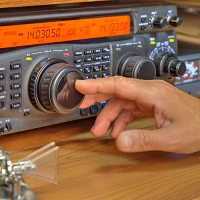The healing power of slime molds
New research on slime molds at the University of Georgia has generated hope for the millions of Americans affected by Alzheimer’s and other neurodegenerative diseases that a cure could one day be possible.
Finding a cure for Alzheimer’s has been stymied by a fundamental question: what causes it? Until scientists know what causes Alzheimer’s, they don’t know how to stop it.
One of the few clues scientists have deduced is that Alzheimer’s is accompanied by a tiny protein build up in a specific part of the brain. It was unclear whether the protein build up was the cause of Alzheimer’s or merely a side-effect of Alzheimer’s. Making things more problematic, the protein is present to some degree in everyone’s brain, and increases as part of the natural aging process.
These protein clusters — called Hirano bodies — were only known to humans, so experimenting to find out why they form and whether they are good or bad was problematic.
Enter slime molds.
A team of researchers with the University of Georgia, led by Marcus Fechheimer and Ruth Furukawa, were studying a cellular slime mold species from the Great Smoky Mountains National Park several years ago when they stumbled on something entirely unexpected.
Related Items
“They were looking into answering simple, but hitherto unanswerable questions about basic cell functions, like how do cells move? Eat? Shape themselves?” explained Keith Langdon, a park biologist.
In the process, they found Hirano bodies. Bingo. Finding another organism where Hirano bodies are present meant researchers would finally have something to experiment on.
The slime mold species Dictyostelium discoideum from the Smokies became a guinea pig for researchers trying to find the cause and cure of Alzheimer’s. By manipulating the Hirano bodies in the slime molds, they are learning what makes them tick.
In yet another discovery, the Georgia researchers introduced Hirano bodies into a cluster of cervical cancer cells, and the cancer cells died. Again, it’s too early to say whether Hirano bodies did the trick, but they do seem to be present while cells fight a disease.
According to statistics from the Alzheimer’s Association, some 4.5 million Americans suffer from Alzheimer’s disease.. Over the next several decades, scientists estimate that number will more than triple.
“It will be years before the importance of these, and future, related discoveries become fully known,” said Langdon. “In the meantime, it is important for those of us involved in conservation of natural areas to continue our efforts to help the public understand the importance of all biodiversity — for our own well being.”
— Becky Johnson









